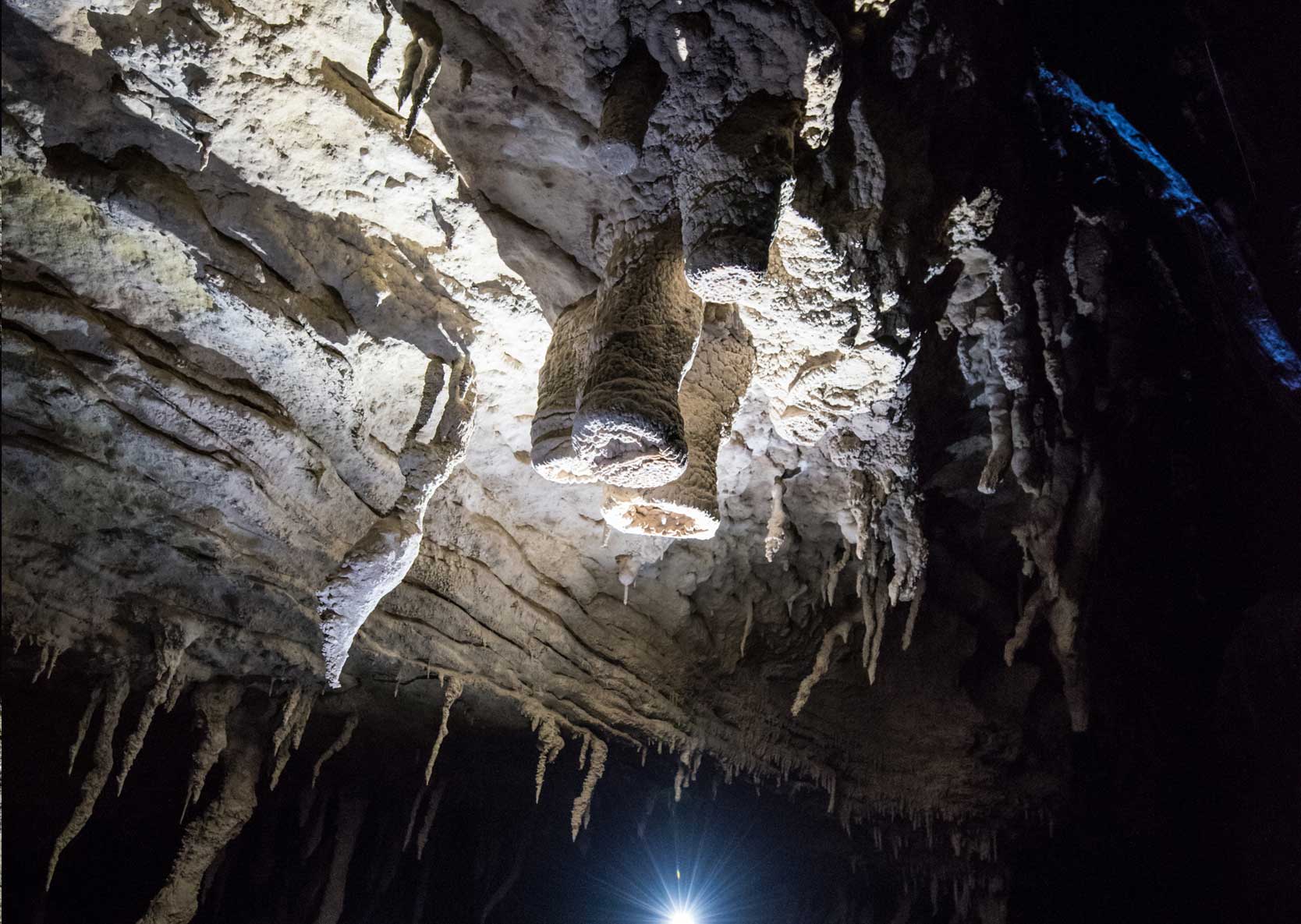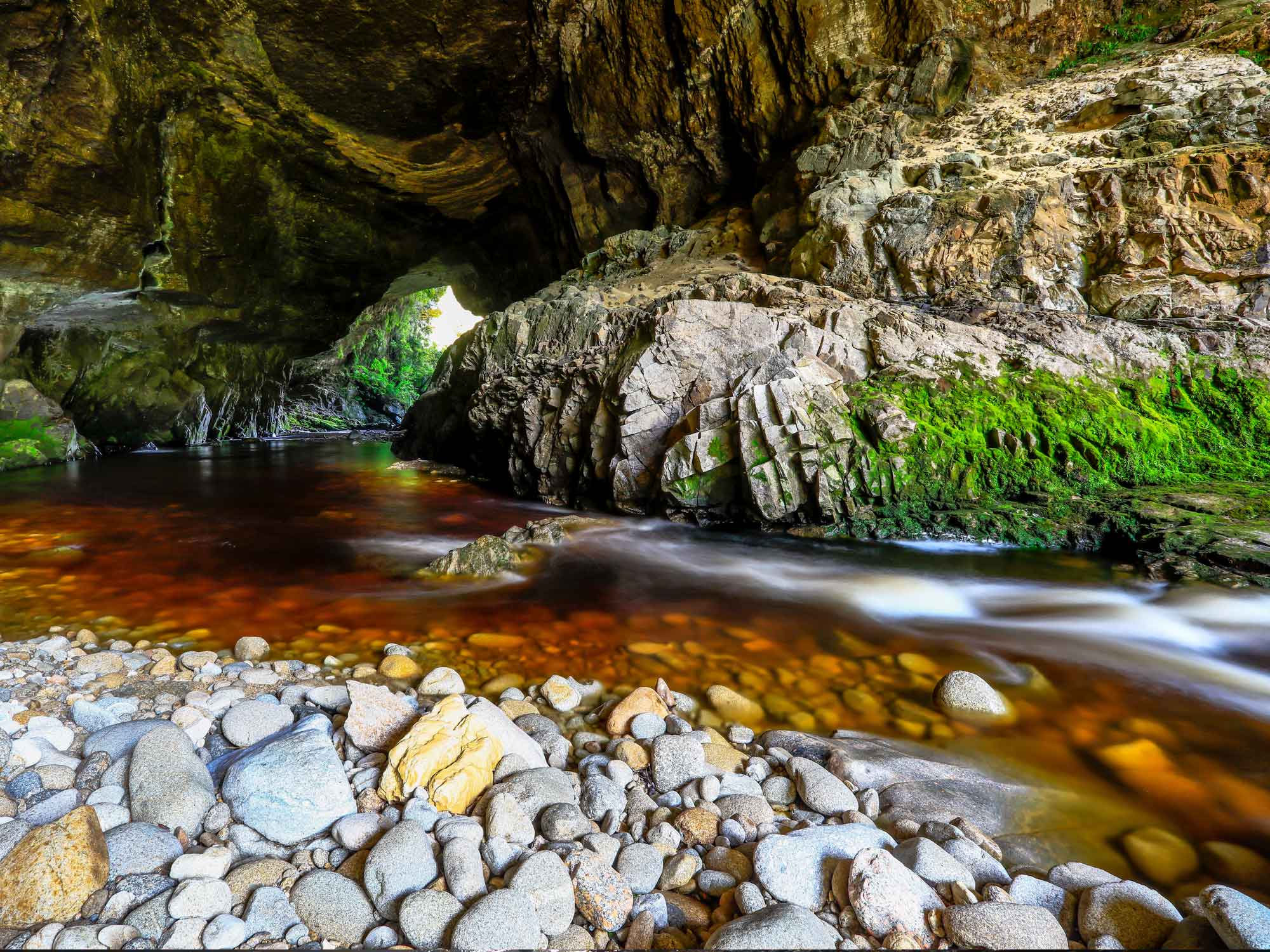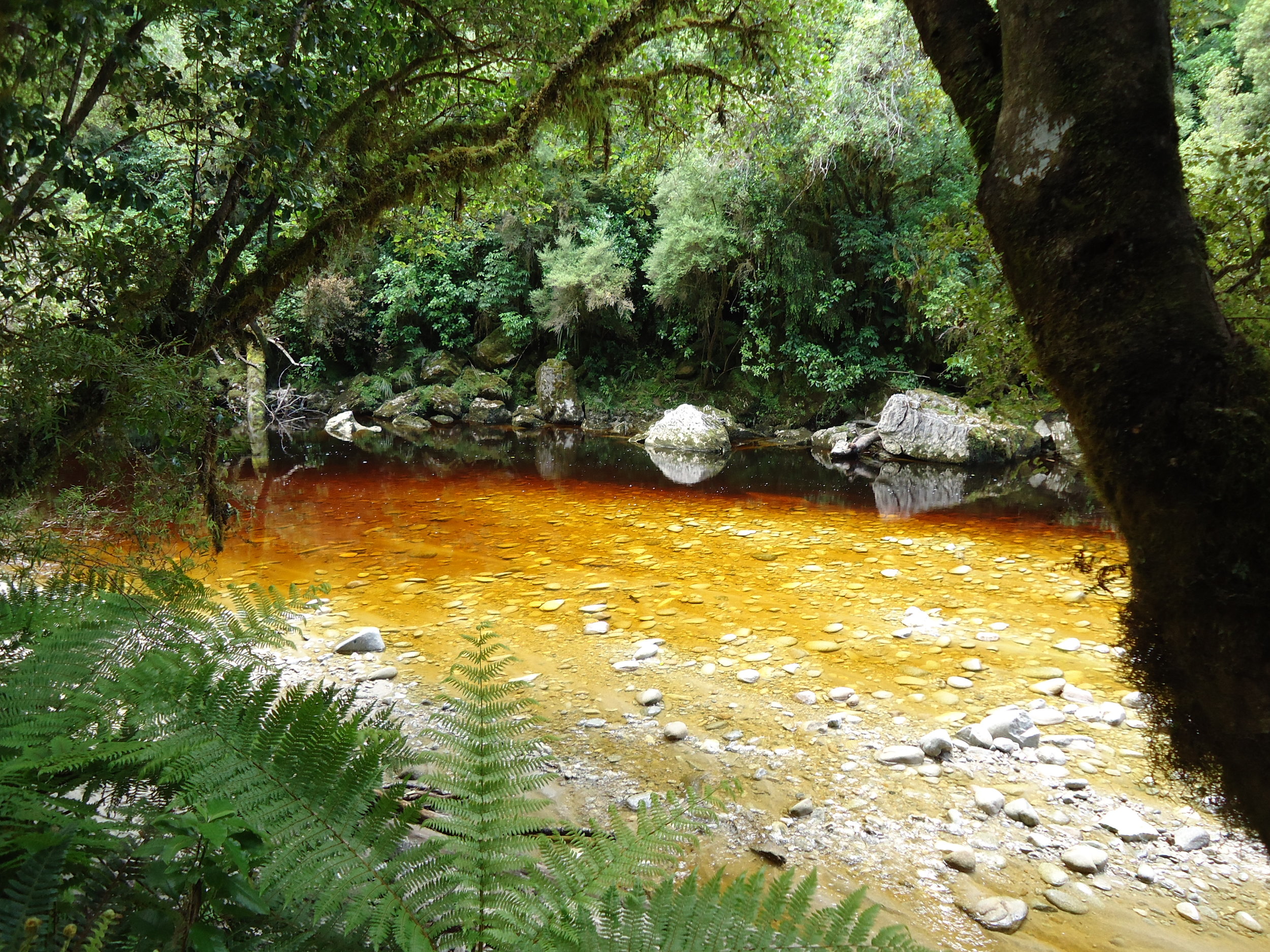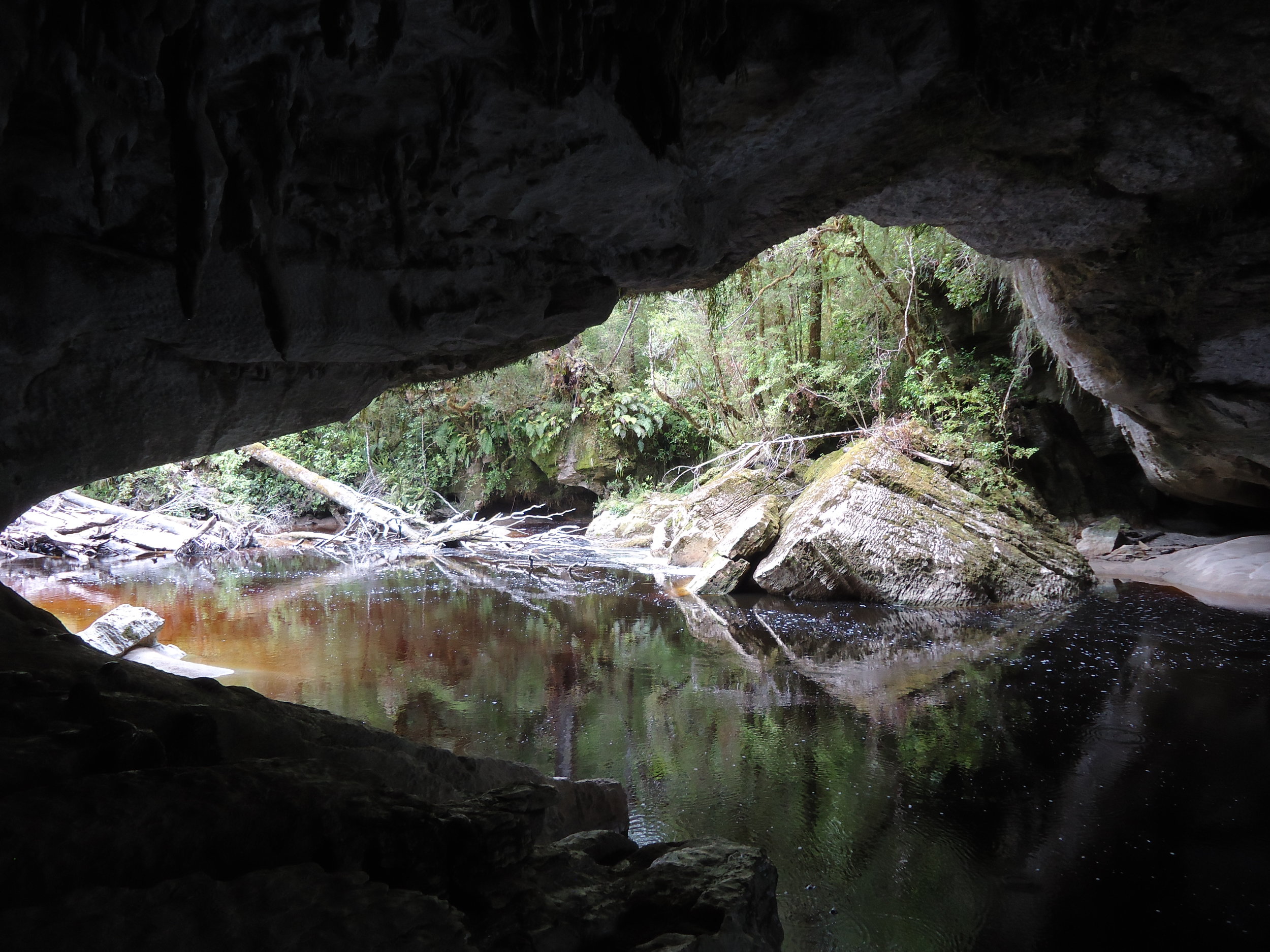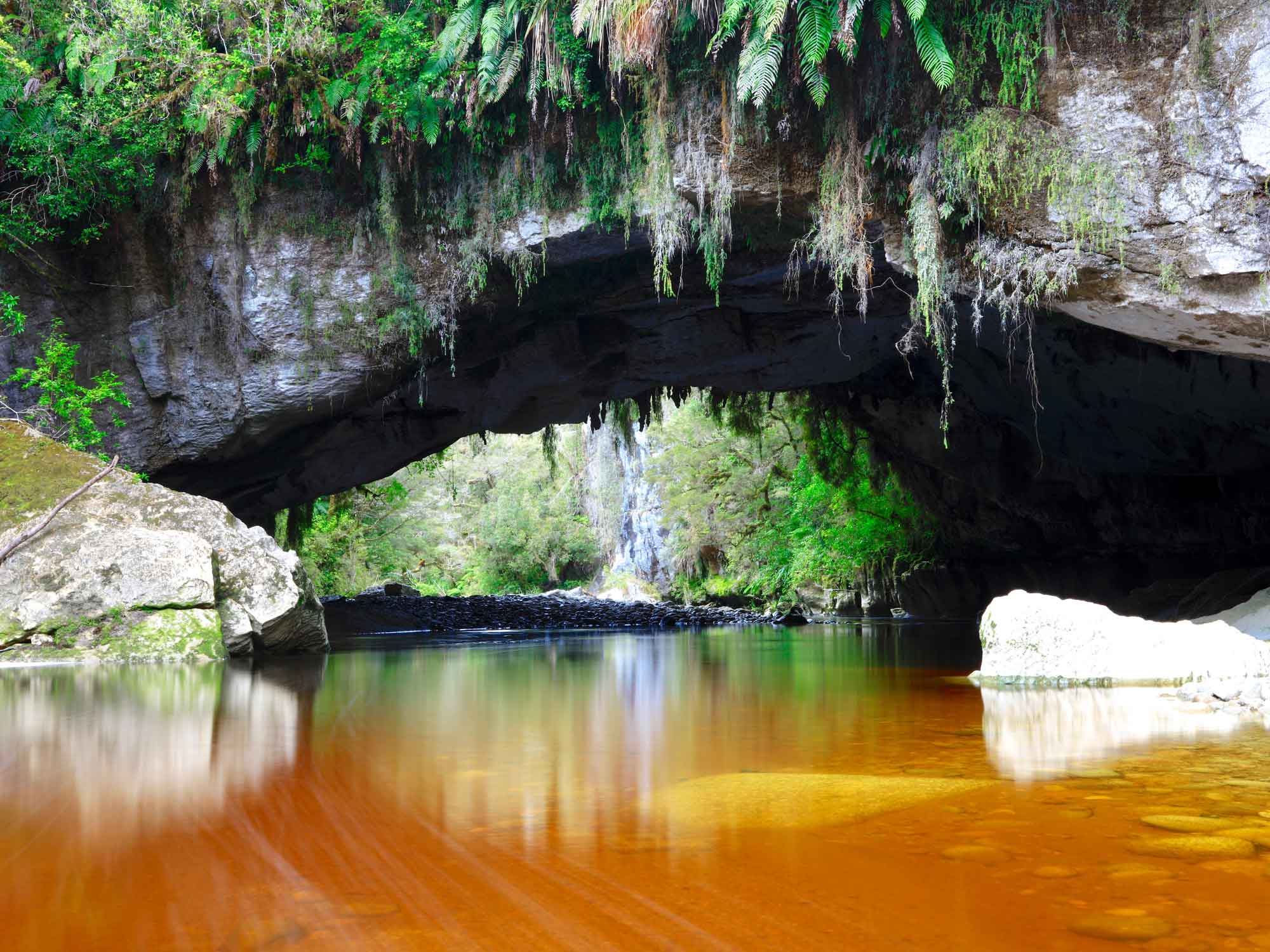History
The area was certainly known to our early mapmakers, and the “natural bridges” or arches are marked on old Karamea maps dating back to the 1880s.
Goldminers and deerstalkers roaming the Oparara came back with some pretty tall tales of this remarkable country, until Forest Service staff, working in the area in the late 1970s, stumbled across the entrance to Honeyflow Stream.
Subsequent investigation by the Buller Caving Group in the 1980s led to international scientific interest and National Museum involvement, when it was revealed that the caves had the most varied collection of subfossil bird bones ever found in New Zealand tucked away in their depths.
Since Forest Service days a guiding concession has been run by private operators, until purchased by the Oparara Valley Project Trust on October 1 of 2004.
Geology
The Oparara Basin is formed from a bed of 350 million year old Karamea granite overlaid by a narrow belt of limestone, with a layer of blue-grey mudstone (or papa) on top.
The Honeycomb Hill Caves tunnel system was formed over the last million years, while the limestone itself, from 15 to 60 m. thick, is approximately 35 million years old, formed from deposits of shell debris when the area lay under the sea.
Wrinkling, bending, faulting and glaciation, combined with changes in sea level and erosion, have left us with the geological structure we know today. It is the easily eroded limestone which gives the valley so many of its spectacular features and the caves their cathedral-like passages.
Formations & fossils
This extensive subterranean wonderland of conventional dripstone and flowstone formations also includes a profusion of very beautiful and delicate rarer features known variously to cavers as cave coral, petals, pearls, rimstone pools, elephants feet, moonmilk, and even shawls and straws, depending on how they were formed.
Moa bones in the Honeycomb Hill Caves. The caves are also home to the largest and most varied collection of subfossil bird bones ever found in New Zealand. More than 50 bird species, many of them extinct, have been recorded.
These include nine different moa species, the giant flightless goose, Finsch’s duck, the giant NZ eagle (Hokioi), the giant flightless rail, the flightless coot, the NZ owlet-nightjar and Stephen’s Island wren, as well as other rare NZ birds such as the kakapo, kokako, takahe, and yellowhead.
Petrel and shearwater remains show that these seabirds also once nested in the valley.
Many of the bones were washed into the caves as carcasses by rivers and streams, while others such as moas fell through holes in the cave roofs.
As limestone and bones are very similar in their chemistry, and the temperature inside the caves steady, many of the bones are perfectly preserved, adding to the significance of their discovery, since many date back some 20,000 years.
There are also the bones of native frogs and lizards, and the remains of 40 different land snail species, finds of immense scientific value in the study of the evolution of more advanced species.
The Honeycomb Caves
These are situated in the 'Honeycomb Hill Caves Specially Protected Area' in the Oparara Basin, Karamea, in the Kahurangi National Park.
The Honeycomb Hill caves lie some 300 m above sea level in the Oparara Valley, a broad shallow valley at the head of the Oparara River just north of Karamea.
The Basin itself is relatively sheltered.. Some six metres of rain pour into the area each year.
“The cave system was fascinating, and we loved seeing the fossils.”




